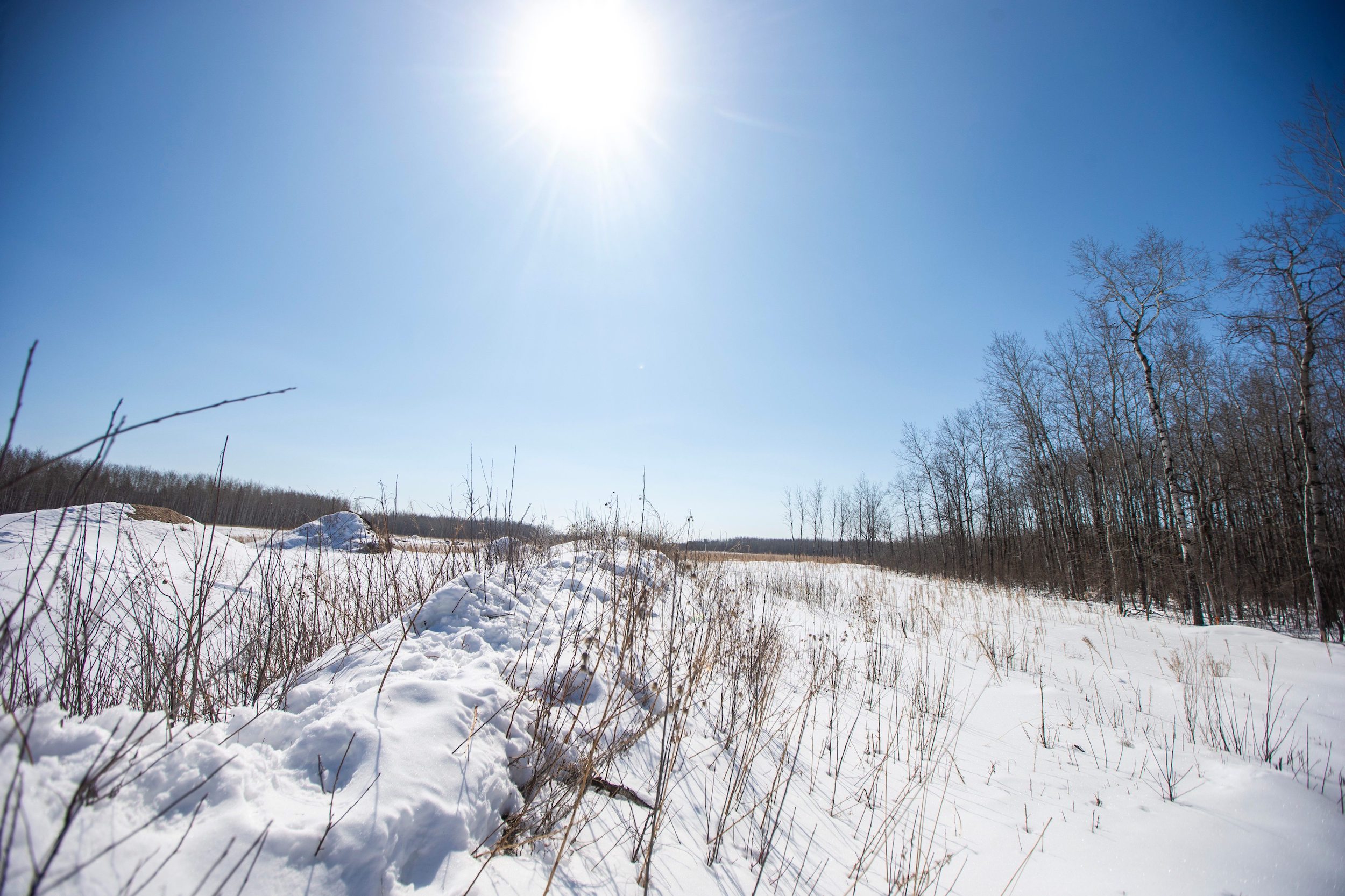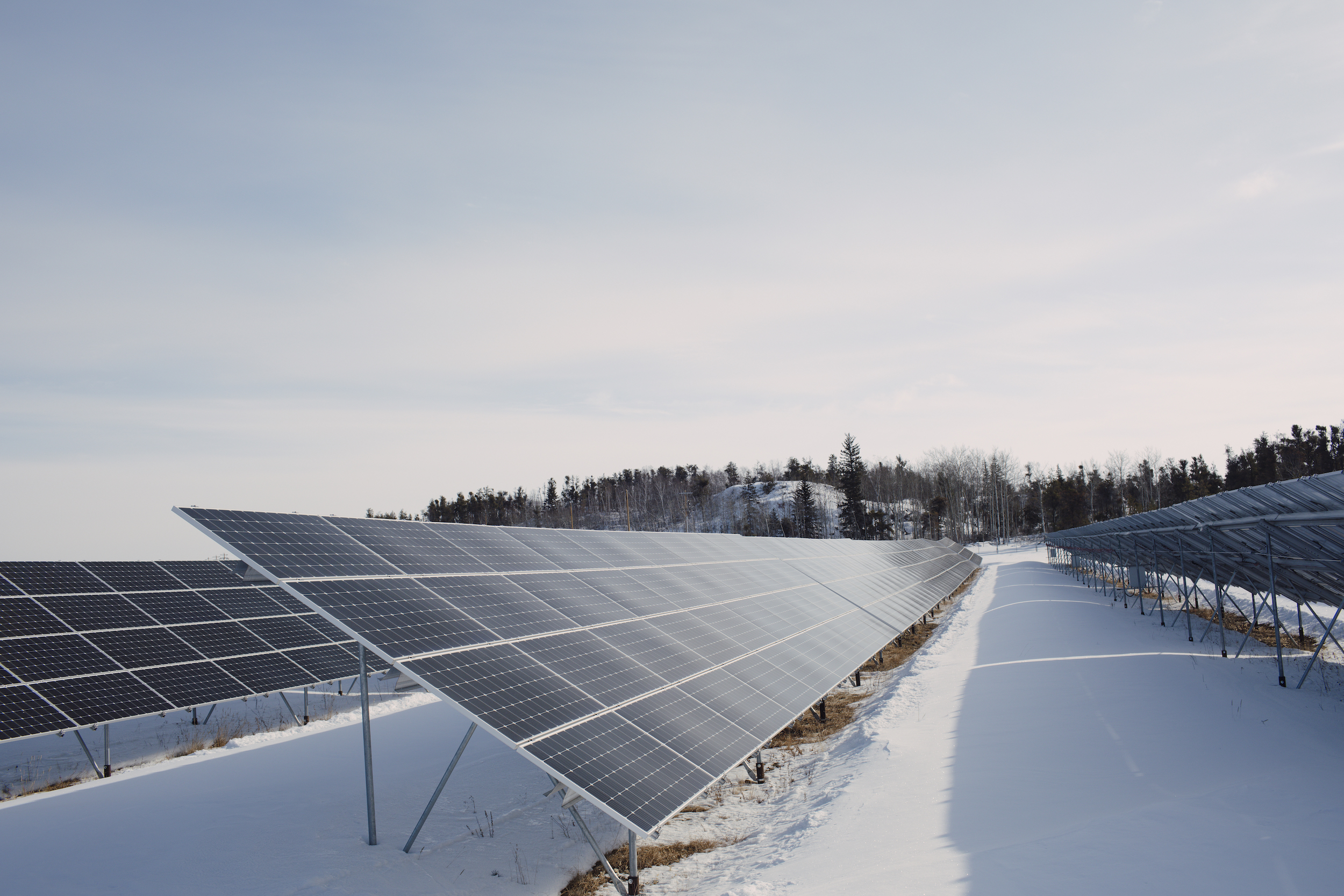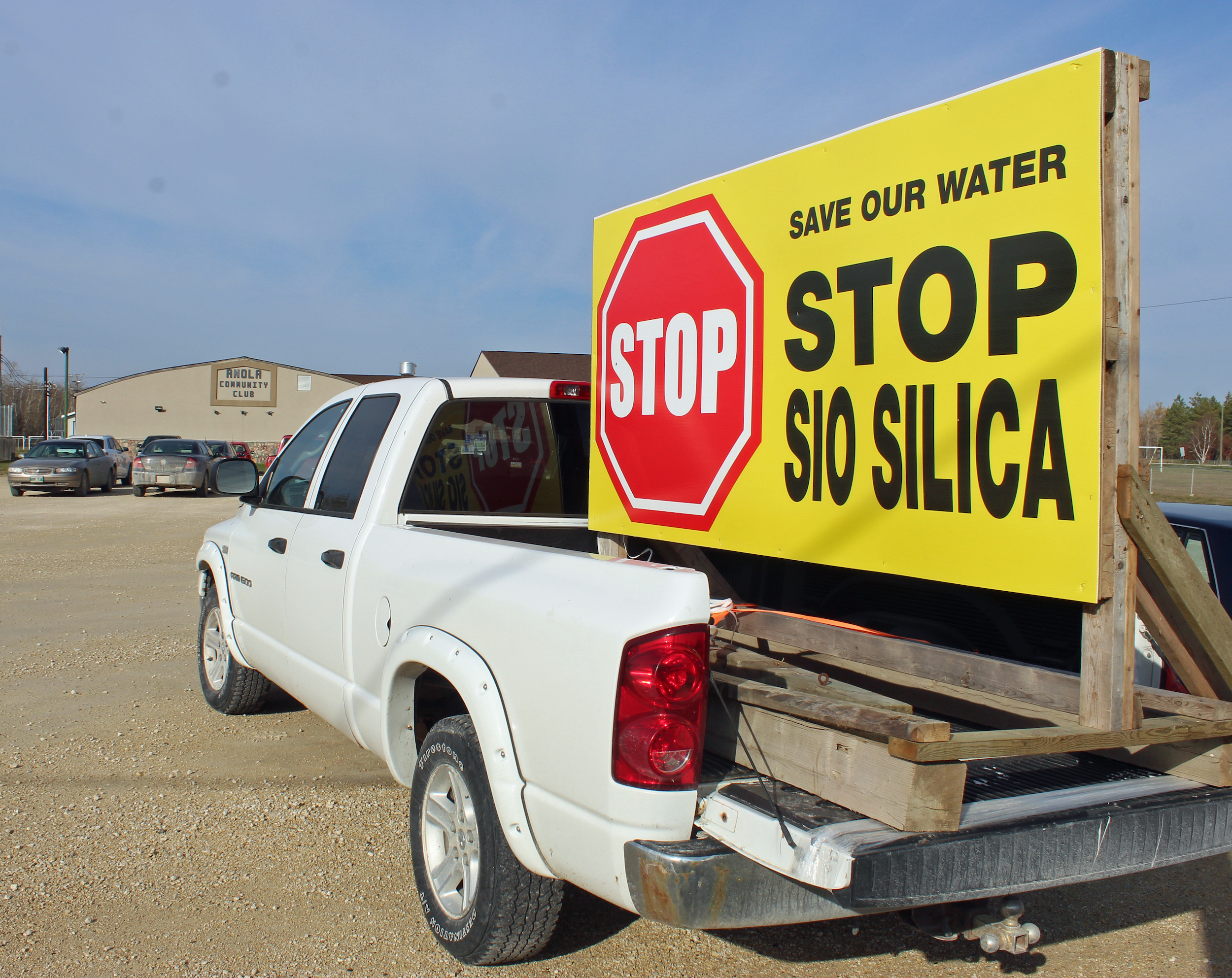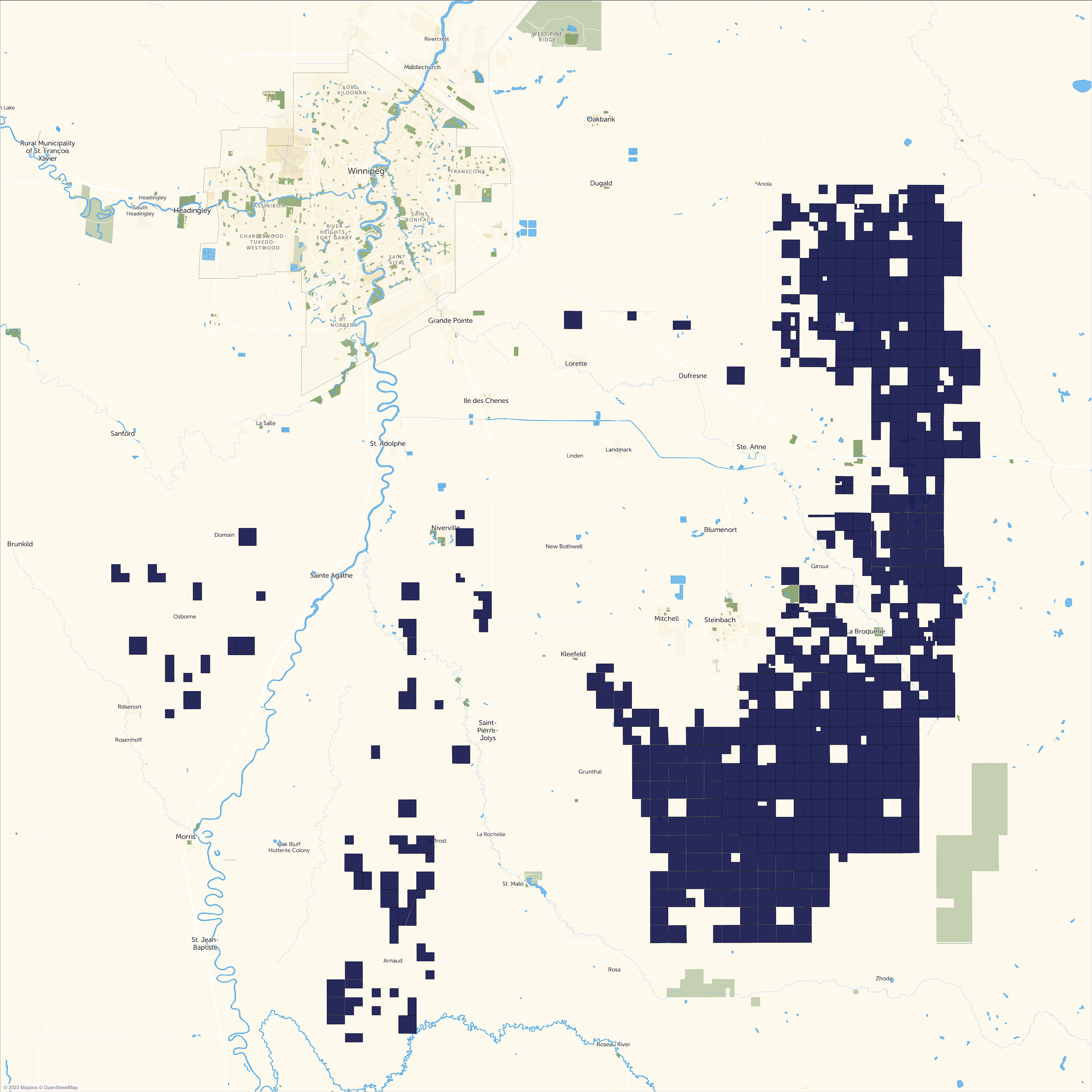
In a Nova Scotia research lab, the last hope for an ancient fish species
Racing against time, dwindling habitat and warming waters, scientists are trying to give this little-known...
The Manitoba government has decided the environmental risks of Sio Silica’s proposed silica sand mine — touted by its proponent as crucial to renewable energy projects — outweigh its economic potential.
Cheers erupted in an Anola, Man., community hall Friday morning as Premier Wab Kinew and Environment and Climate Change Minister Tracy Schmidt announced the government was “saying no to Sio [Silica],” and rejected the company’s application for an environmental licence, a process recently plagued by allegations of ethics breaches on the part of the previous provincial government.
“The business case of this project does not outweigh the serious environmental risk this project poses and the impact it could have on the drinking water of this community and many others in the region,” Kinew said.
“The technology that Sio [Silica] is proposing to use is a new method of extraction. With this unproven approach we cannot guarantee the safety of drinking water for future generations,” he added.

The decision came as a shock to Sio Silica. In a statement after Friday’s press conference, CEO Feisal Somji said the province’s environmental approvals branch had circulated a draft licence with further testing and cumulative effects assessment conditions to the company last September. The company was not given advance notice of the rejection, he said. (Schmidt said her office reached out to Sio Silica earlier Friday morning.)
“We are disappointed with the decision of the NDP government today on our licence, especially in light of the fact that Sio was advised that the province had no more questions,” the statement said.
“In fact, Minister Schmidt declined meeting requests and has never shared with Sio any concerns her office or the department may have had.”
Since 2020, Alberta-based Sio Silica has been touting its plan for a novel sand mining operation that would extract millions of tonnes of silica sand from a southeastern Manitoba aquifer. The company said its proposal would kickstart a green manufacturing industry in the province, dubbing it the “greenest” mine of its kind.
High purity silica sand, like the kind the company believes is beneath the communities of Anola, Vivian and Springfield, just outside of Winnipeg, is a necessary material used in the manufacturing of semiconductors, solar glass, lithium-ion batteries and other technologies.
The tension surrounding the Sio Silica proposal in Manitoba was something of a foreshadowing for debates set to play out in communities across the world, as governments move toward renewable energy projects and rapidly expanded electrification. Silica sand is increasingly seen by governments around the world as an essential component of clean energy technologies and has been dubbed a “critical mineral” by the United States, the European Union, Australia and Japan.

By 2026, the International Energy Agency forecasts global renewable electricity capacity will rise more than 60 per cent from 2020 levels, meaning more critical minerals — and more silica sand — will be needed than ever before.
But Schmidt said Friday Sio Silica’s sand mine proposal presented only “limited economic opportunity in the way of jobs, in the way of revenues, in the way of taxes, in the way of royalties.”
Sio Silica’s mine would have reportedly created about 50 direct jobs. The company secured customers in international markets, including two Chinese semiconductor manufacturers and had reached a memorandum of understanding with German solar panel manufacturer RCT Solutions to supply the raw material for a proposed Manitoba solar panel plant.
RCT Solutions signed its own memorandum of understanding with the provincial government in July, stressing its desire to see Sio Silica receive a licence for its mining operation. RCT Solutions has said its proposed Manitoba solar panel plant would be the largest in North America and could create up to 8,000 jobs.
On Friday, Kinew said the agreement with the solar panel company was not legally binding, but did not provide further detail on the impacts the licence rejection could have on the company’s proposal.
Somji said the New Democratic Party had been in discussion with both Sio Silica and RCT Solutions for more than a year.
“It is a known fact that RCT and Sio are contingent upon each other,” Somji wrote. “Unfortunately, Manitoba will now lose RCT as the province has not licensed the resource pure enough for RCT’s stringent requirements.”
The company planned to employ an airlift extraction technology that hasn’t been used in large-scale mining anywhere in the world to bring that sand to the surface — and to market.
But from the outset, Sio Silica has come up against opposition from local community members who feared the consequences of drilling hundreds of caverns in the region’s drinking water source would ultimately damage the local water supply.

Their concerns were bolstered by an independent review from the province’s Clean Environment Commission, which identified several unanswered questions — and unmitigated risks — with Sio Silica’s proposal.
“This project never made sense for the region or for Manitoba,” Glen Koroluk, the executive director of the Manitoba Eco-Network, said in a press release Friday. “Today’s announcement confirms the importance of evidence-based decision-making.”
Schmidt said Friday the Clean Environment Commission’s advice, as well as that of environmental experts in her department, ultimately informed her decision to reject the proposal.
“No one knows what the long-term effects of this proposal would be, and frankly the worst-case scenarios would be absolutely devastating as nearly 100,000 Manitobans source their drinking water from these aquifers,” she said.
“We would certainly never rule out projects in the future but this project, this proponent, this time is a no.”
The province has committed to developing its critical minerals — deemed the building blocks of low-carbon energy production and storage — and has stressed the importance of mining to the province’s economic development.

Earlier this week, Manitoba dismissed an appeal of another Alberta-based sand miner’s licence to extract silica sand mined using traditional open-pit methods about 200 kilometres further north, at Wanipigow, to clear the way for a solar glass facility in nearby Selkirk.
On Friday, Kinew said that project was poised to “create hundreds of good-paying, reliable jobs and … make Manitoba a leader in the low-carbon economy.”
“I want to be very clear that we are prepared to develop mining opportunities here in Manitoba, but it has to be done in the right way,” the premier said. “It has to be done in a way that minimizes the risk to the health of humans and the safety of the environment.”
While Sio Silica’s extraction proposal won’t be allowed to go ahead, the company has already secured a licence to build a sand processing plant in the Vivian area. The company has previously said the processing plant could move ahead even if its extraction proposal was turned down.
Sio Silica is currently locked in a land-use dispute with the Rural Municipality of Springfield over the proposed processing facility, which is set to be resolved by an arms-length provincial body in the coming weeks.
Some Springfield residents have expressed concern the company, along with local and provincial officials, have sidestepped regulatory processes in order to see the project developed and have begun calling for a provincial inquiry to examine how the licensing decisions were made.
“Although today’s announcement is very welcomed, we are still left with the underlying
feeling that there is still more to be done,” Allan Akins, the president of the Springfield Taxpayers Rights Corporation, said in a press release Friday.
“The Sio Silica mining and processing project should not have gotten this far.”
Sio Silica said it will evaluate its legal options in light of the province’s decision.
Julia-Simone Rutgers is a reporter covering environmental issues in Manitoba. Her position is part of a partnership between The Narwhal and the Winnipeg Free Press.
Updated on Feb. 16, 2024, at 3:42 p.m. CT: This story was updated to include statements from Sio Silica and the Springfield Taxpayers Rights Corporation, as well as information about Sio Silica’s agreement with RCT Solutions. The story was also updated to clarify the dismissal of an appeal for a proposal near Selkirk, Man. It was an appeal of the extraction licence, not the licence to build the associated solar panel manufacturing facility as was previously stated.
Get the inside scoop on The Narwhal’s environment and climate reporting by signing up for our free newsletter. On March 17, federal Conservative Leader Pierre Poilievre...
Continue reading
Racing against time, dwindling habitat and warming waters, scientists are trying to give this little-known...

From investigative reporting to stunning photography, we’ve been recognized with four 2024 CAJ Awards nods...

The Narwhal is expanding its reach on video platforms like YouTube and TikTok. First up?...
